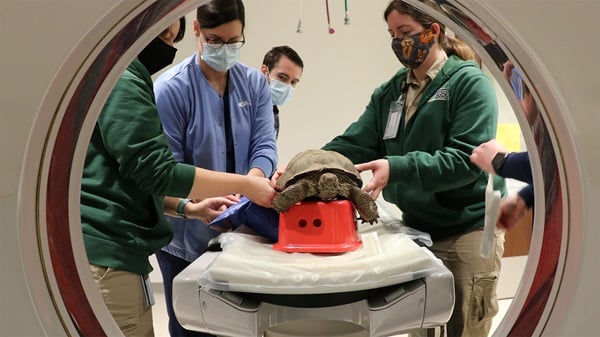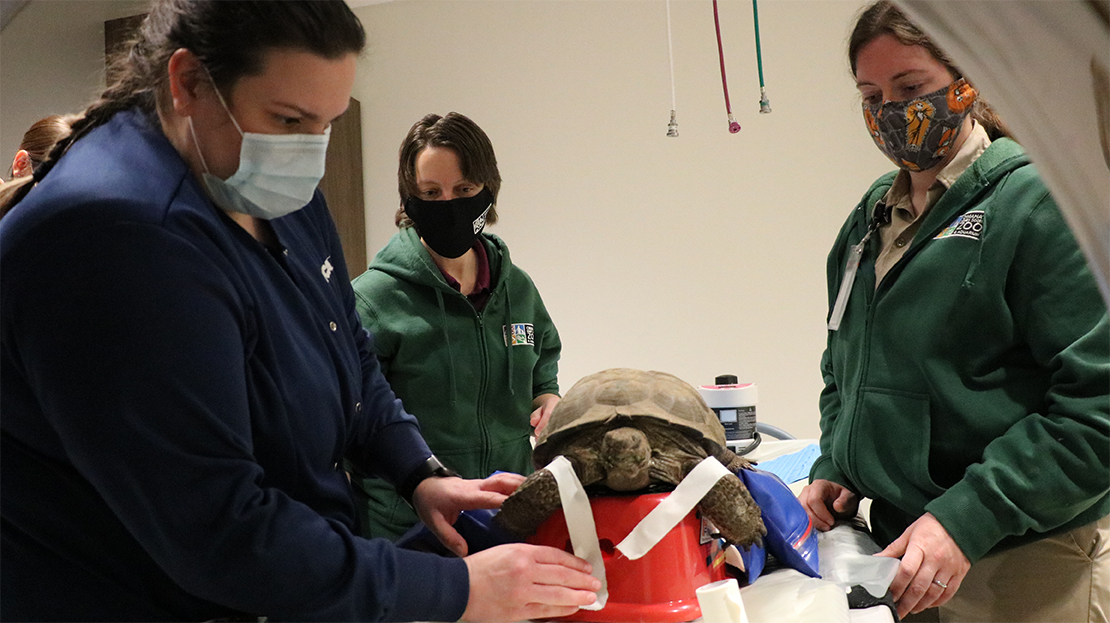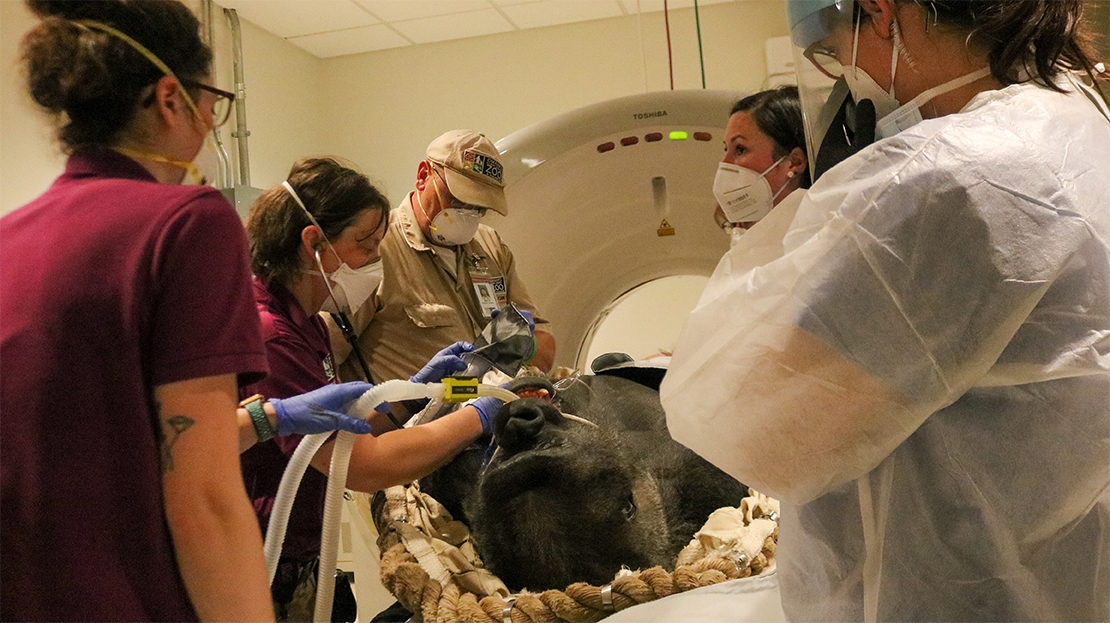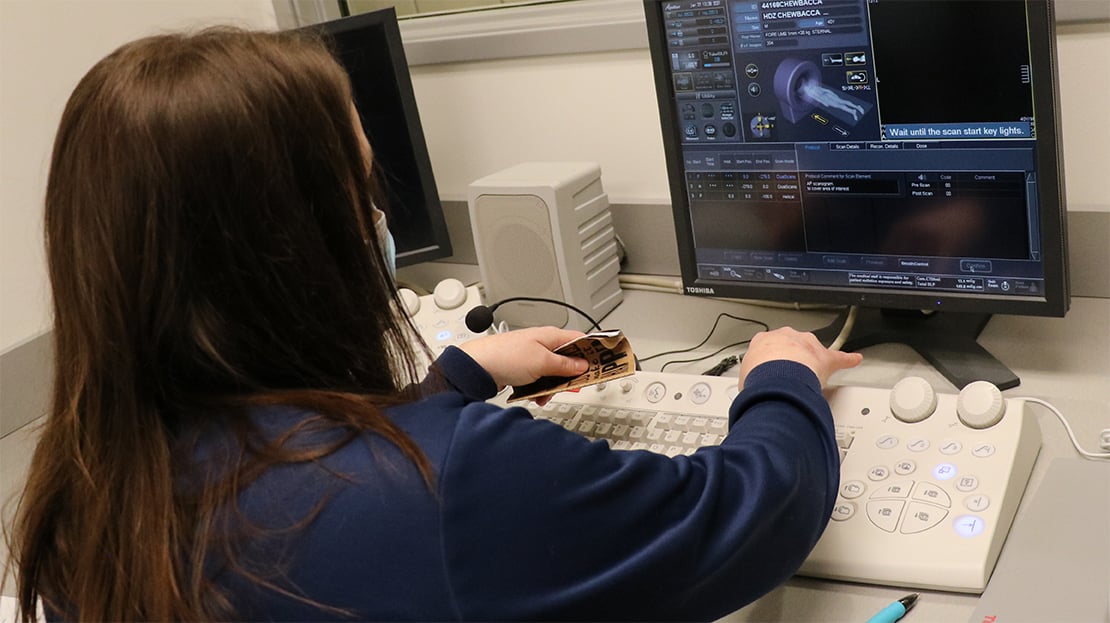VCA Midwest has a longstanding partnership with Omaha’s Henry Doorly Zoo and Aquarium, providing advanced care resources and additional expertise to help keep the zoo’s animals healthy.
As the only emergency and specialty care hospital in the state, VCA Midwest’s top quality diagnostic equipment and expert specialists are in high demand. Since the hospital has the only dedicated veterinary MRI in the area, as well as CT/CAT scan equipment, Omaha’s Henry Doorly Zoo and Aquarium veterinarians rely on VCA Midwest to help diagnose a wide range of ailments. Whether it’s a tortoise with a swollen leg or a cheetah with a bad hip, Associates at VCA Midwest have seen just about everything come through their doors.
“Since we’re a specialty hospital, we’re used to seeing a broad scope of complex health problems,” explains Christopher Byers, DVM, DACVECC, DACVIM, CVJ, a board certified veterinary specialist in emergency and critical care and small animal internal medicine at VCA Midwest. “I love the challenge complex zoo cases provide, as well as the collaboration between our hospital, the zoo veterinarians, and the handlers, who are most attuned to the animal’s personality and behaviors.”
VCA specialists not only help diagnose illness through exams and advanced diagnostics, they occasionally assist in surgeries on zoo animals as well. For her first interaction with a resident of Omaha’s Henry Doorly Zoo and Aquarium, Michelle Meyer, DVM, DACVS-SA, medical director and board certified veterinary surgeon at VCA Midwest, performed surgery on a lemur’s torn cruciate ligament.

Dr. Byers, a self-proclaimed “cat guy,” has had the opportunity to work with tigers and cheetahs.
“Our specialists may not always be familiar with the specific physiology of some of these animals, but that’s where the partnership comes in,” he explains. “We utilize our skills and the zoo team utilizes theirs.”
According to Sarah Woodhouse, DVM, DACZM, director of animal health at Omaha’s Henry Doorly Zoo, the coming together of all of that specialized knowledge is what makes the partnership so wonderful.
“We have some pretty great conversations, bouncing ideas around,” says Dr. Woodhouse. “They can share how they would treat a dog or a cat with similar symptoms, and we can provide knowledge about diseases common to the type of animal we’re treating.”
Dr. Woodhouse has been particularly grateful for the expertise of Logan Donaldson, DVM, a veterinary neurologist at VCA Midwest. Dr. Donaldson has been instrumental in treating a few of the zoo’s gibbons, who have been struggling with weakness in their arms and legs due to neurological disease. From interpreting MRIs to recommending medication, Dr. Donaldson has been an invaluable resource to the zoo’s animal health team. Dr. Woodhouse proudly reports one gibbon in particular has made remarkable progress under the collaborative care approach.
“The gibbons are just one example of how VCA Midwest goes out of their way for our animals,” says Dr. Woodhouse. “They’re always willing to fit us into the schedule or take phone calls at odd times of the day. It’s nice to know they’re there for us.”
Associates at VCA Midwest say they benefit just as much from the partnership as the animals do.
“This can be a stressful job and having zoo animals come to our hospital brightens everyone’s spirits,” explains Dr. Meyer. “The zoo brings a lot of joy to the community, and we’re happy to play a part in keeping the animals healthy.”
“The zoo brings a lot of joy to the community, and we’re happy to play a part in keeping the animals healthy.”




